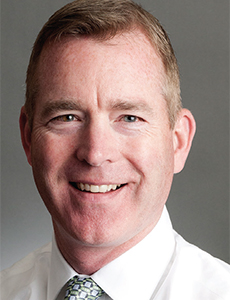Private Client
High Net Worth Risks

Competition among major insurance companies to cover high-net-worth individuals and their families is increasing, despite the complexities of this class of business.
The risks facing the wealthy are many, ranging from the challenges encountered when they travel abroad, often-costly personal liability cases, kidnap and ransom risks and a sharp increase in cyber-related dangers.
In fact, the executives interviewed for this article cited cyber risk as the greatest emerging threat to high-net-worth families and ultra-high-net-worth families.
But the threat of liability for those with deeper pockets is ongoing.
New York-based Sam Cargill, chief executive officer of Aon Private Risk Management, said that personal liability poses the biggest issue for wealthy individuals and their families on a regular basis.
“The majority of liability lawsuits revolve around injuries from auto or recreational vehicle accidents or accidents in the home from guests or domestic employees,” he said.
“The size of liability judgments and the search for deep pockets has increased unabatedly in the past 20 years,” said Jerry Hourihan, New York-based president of AIG Private Client Group, U.S. and Canada.
“It’s not infrequent to see judgments north of $10 million. A few years ago $5 million was the most you’d ever see. That tends to be one of the catastrophic issues our clients face.
“The size of liability judgments and the search for deep pockets has increased unabatedly in the past 20 years.” — Jerry Hourihan, president, private client group, U.S. and Canada, AIG
“Risks from natural catastrophes also continue to increase,” Hourihan said. “Full catastrophe protection is important no matter what the catastrophe may be.”
Another clear-and-present danger that confronts wealthy families is the constant concern about possible kidnap and ransom situations.
“Kidnap and ransom is an important protection risk for high-net-worth individuals and their families, especially as the affluent live a more global lifestyle,” said Cargill.
“A solid combination of insurance and professional management services is the most holistic approach to use in responding to these risks, whether they are work- or travel-related.”
New York-based Denise Balan, XL Catlin’s Americas head of the crisis management kidnap and ransom team, said her group provides clients “with full access to security consultants for the full gamut of services, from travel advice for the clients and their families, to considerations about personal safety, to security around the home.”
There are many multinational-related risks that should be top-of-mind for high-net-worth individuals and their families, said Warren, N.J.-based Frances O’Brien, newly named division president, Chubb’s North America personal risk services.
Global Lifestyle Risks
“This is particularly true as it relates to buying homes abroad and domestic staff,” O’Brien noted. “Many high-net-worth families own homes in multiple countries. But international property and casualty laws differ from country to country.
“To mitigate multinational-related risk, high-net-worth individuals should consult with a specialized agent or broker who is licensed to issue policies abroad, understands the cultural differences and is well-versed in the local rules and language,” O’Brien said. “Seeking counsel before departure is the only way high-net-worth individuals and their families can be fully protected.”

Frances O’Brien, division president, North America personal risk services, Chubb
But as noted before, the greatest emerging danger for wealthy individuals and their families is a rapidly expanding variety of cyber risks.
“The affluent usually are the initial targets for a hacking, identity theft or a reputational risk event,” said Cargill.
“Libel or slander pose another major threat stemming from the internet and social media engagement.”
New York-based Bob Courtemanche, senior managing director and practice leader for Risk Strategies Cos.’ eight-year-old private client group, said that “when it comes to cyber threats, hackers accessing emails of the wealthy to arrange money wire transfers to themselves is definitely a growing issue.”
“A solid protocol for phone voice verification from the client is a must. You can’t just rely on the email, because you can’t be sure if it’s really from the person named on the email,” he said.
Also, lawsuits growing out of social media behavior are a rapidly emerging risk area, said Courtemanche. “You’re seeing a rapid increase of social media use among the wealthy, whether it’s by the clients or their children on the web. Damaging comments are made and you end up with legal action.”
“A solid protocol for phone voice verification from the client is a must. You can’t just rely on the email, because you can’t be sure if it’s really from the person named on the email.” — Bob Courtemanche, senior managing director with Risk Strategies.
Reputational damage cases will find their way to the courts and ultimately threaten someone’s assets if real negligence is found, Courtemanche said. “Plaintiffs could also allege emotional distress or bodily injury claims or libel claims,” he said.
“The internet changes the dynamic of these types of lawsuits,” he said. “It’s no longer that someone made an allegation that could be contested. Now it’s electronically documented forever. So we’re counseling our high-net-worth clients to be more aware of this and to educate their children about these matters.”
Prized Clients
Insurers are in pursuit of these high-net-worth clients, but definitions for the category varies widely from insurer to insurer.
“Our benchmark for a high-net-worth family is their lifestyle,” said Cargill. “Typically, they own several high-value homes and additional assets, such as valuable jewelry, vehicles, art, and other interests requiring sophisticated insurance and risk management programs.”
Chubb’s O’Brien said the company defines the category as “someone who has a sizeable portfolio of assets consisting of one, or a combination of, fine art, valuable assets, yachts, homes and apartments, luxury automobiles, collector cars and jewelry.
“We do not assign a dollar value to the term ‘high-net-worth.’ ”
Jennifer Schipf, New York-based senior vice president of fine art and specie and the head of the luxury lines group at XL Catlin, said coverage combines specialty managed lines for equine, aviation, recreational marine (yacht), crisis management for kidnap and ransom, and lines specific to fine art and jewelry collections.
The company serves individuals and their families with liquid assets of $30 million to $50 million.
She said the coverage is “a combination of both property and specialty insurances, depending on the line of business. It’s a mixture of product types for each of the product lines.”
AIG’s Hourihan said the insurer defines “high-net worth individuals and their families [as] ones who typically have homes worth $1 million in value and up, with $1 million in investable assets,” said Hourihan.
“Ultra-high-net-worth individuals and their families typically have $30 million or more in investable assets.”
Studies indicate that the richest individuals are seeing huge growth in income. These insurers and others focusing on the challenging and diverse needs of wealthy families will surely see their specialty programs increase as well. &













